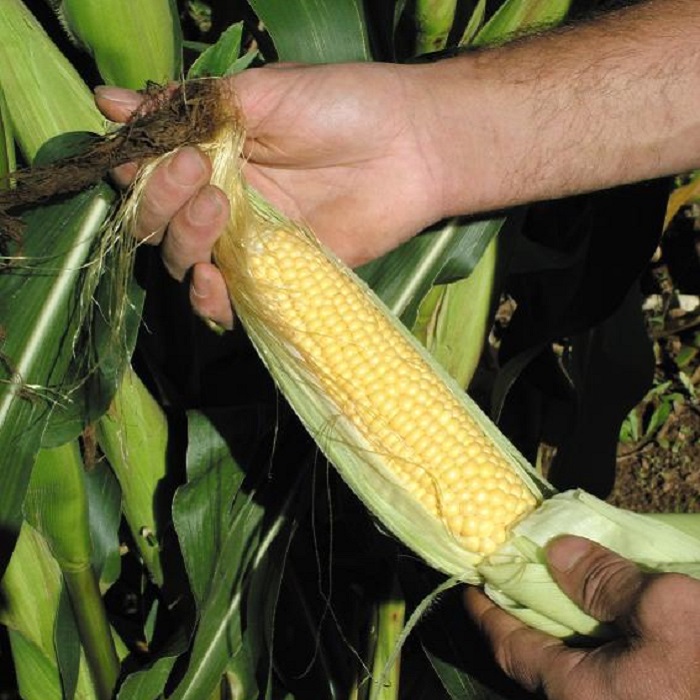When Your Vegetable Plants Arrive
Remove from the packaging immediately, check the compost is moist and water if necessary. All of our Vegetable plants are raised on a specialist nursery and where appropriate they are grown in special loose fill ‘module’ trays.
Originally designed to withstand the rigours of field scale vegetable production, these plants are vigorous and healthy yet sturdy and tough with particularly well developed root systems.
This ensures the very best establishment in the garden under the widest range of conditions. Your plants are ready to be planted immediately into their final positions as soon as possible.
Site and Soil Preparation.
Choose a sunny well drained position that has ideally been dug in the autumn and enriched with well rotted manure or garden compost.
Prior to planting cultivate by forking over to give a weed free, well worked plant bed with no large lumps. Apply a general fertiliser such as ‘Growmore’ and rake into the surface.
Plant each vegetable plant by parting the soil, inserting the plant such that the top of the module plug is just below soil level and firm gently afterwards. A small trowel is the ideal tool to aid this process. Water well after planting and ensure that the plants are kept well watered and weed free through the growing season.
Brassicas (Broccoli, Brussels Sprouts, Cabbage, Cauliflower & Kale)
As a general rule these can be spaced at 61cm (24″) x 61cm (24″) although pointed and summer cabbage will be quite happy spaced at 46cm (18″) square. Cauliflower in particular should be grown with constant and steady moisture as this will help prevent premature ‘buttoning’. Tall plants such as sprouting broccoli, kale and brussels sprouts may benefit from staking to prevent wind rock in strong winds.
Lettuce – Plant 23cm (9″) square in sun or part shade. Keep well watered, a mulch of garden compost will help prevent moisture loss.
Runner Beans and Climbing French Beans – Plant 23-30.5cm (9-12″) apart against supporting canes or twine. Compact growing varieties can be grown in a large pot on the patio. Pick beans regularly to ensure a succession of ripening pods. Feed with a high potash liquid fertiliser (a tomato feed is ideal).
Dwarf French Beans – Plant 6in apart in rows 45.75cm (18″) apart. Can also be grown in containers using a good quality potting compost. Pay particular attention to adequate watering at flowering time. Feed with a high potash liquid feed (a tomato feed is ideal).
Beetroot – If plugs contain more than one plant do not separate, plant at 10cm (4″) apart with 30.5cm (12″) between rows. Do not allow to dry out. Twist foliage off at harvest (rather than cutting) to prevent the sap bleeding.
Celery – Plant in a sunny spot, planting 23cm (9″) apart each way. Celery is a hungry crop and will respond to regular watering and feeding with a balanced liquid fertiliser from early summer. Protect against slugs.
Celeriac – Plant 30.5cm (12″) apart in 30.5cm (12″) rows in sun or light shade. Keep watered and feed as for celery. Remove ageing lower leaves as plants grow to expose bulb. Harvest in autumn or leave in situ protecting with mulch and lift as required.
Courgettes – Allow plenty of space planting 91cm (36″) apart in each direction. Keep well watered and as the fruits swell feed with a liquid tomato every two weeks. Pick as soon as ready to encourage further fruiting.
Leeks – If plugs have more than 1 plant do not separate as the plants will naturally part during growth. Plant Leeks 23cm (9″) apart with 30.5cm (12″) between rows. Make a small hole and drop plug module in to a depth of about 15cm (6″). Water in but do not fill, holes will fill unaided as time passes and plants grow whilst at the same time a blanched stem will be produced.
Sweet Corn – Any modules that contain more than one plant should not be separated. Plant in a square or rectangular block (rather than row) as this will aid wind pollination, spacing at 35.5cm (14″) in each direction. Plant such that the top of the plug is about 2.5cm (1″) below the surface. Sweet corn roots shallowly so take care to avoid damage when hoeing. Keep well watered especially as the cobs begin to swell. Harvest when tassels turn brown and full kernels are milky.
Leaf Beet – Much more bolt resistant than spinach and prefers a sunny or lightly shaded spot. Plant 23cm (9″) apart in 38cm (15″) rows. Pick young foliage and use as spinach.
Peas – Plant in free draining moisture retentive soil in a sunny spot. Plant 15cm (6″) apart in 61cm (24″) rows. Support with twiggy sticks or netting. Pick regularly when pods are plump.
Last Updated on April 24, 2023 by Suttons Horticultural Team







My courgette plant is producing lovely flowers then baby courgettes which grow to about 2 to 3 inches then rot on the stem. What am I doing wrong? I’m feeding them tomato fertiliser every week and keep them watered.